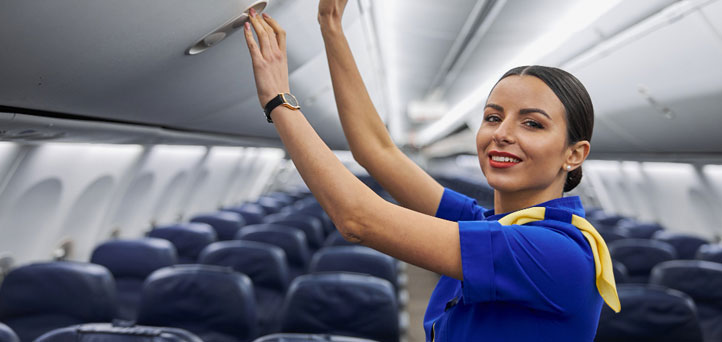
Personnel tasked with preparing dangerous goods consignments undergo specialized training tailored to the specific classes and tasks they handle. Their responsibilities include ensuring proper classification, packaging, labeling, documentation, and risk assessment. They play a critical role in compliance with safety regulations and effective communication to facilitate the safe transport of dangerous goods. This training ensures they are well-equipped to handle various aspects of preparing consignments, reducing risks throughout the transport process.
Staff responsible for processing or accepting goods labeled as general cargo must be well-versed in dangerous goods regulations to recognize and identify consignments that contain hazardous materials. Their training focuses on specific classes, divisions, and UN numbers eligible for transport, helping them distinguish between regular and dangerous goods. This knowledge is essential to prevent the mishandling of hazardous materials and ensure that dangerous goods are identified and processed according to air transport safety standards.


Personnel responsible for processing or accepting dangerous goods consignments must have the expertise to ensure that these shipments comply with air transport regulations and are safe for transport. This involves carefully evaluating the packaging, labeling, and documentation to confirm regulatory compliance. These individuals, often employed by freight forwarders, ground handling agents, or airline operators, need comprehensive knowledge to carry out their duties effectively. Their role is crucial in maintaining safety across the entire air transport chain.
Personnel tasked with handling cargo in warehouses, loading and unloading unit load devices (ULDs), and managing cargo within aircraft cargo compartments need training on specific tasks and responsibilities. This training includes the safe handling of dangerous goods, proper stowage techniques, and adhering to safety protocols during the loading and unloading processes. Their role ensures that hazardous materials are safely integrated into the air cargo system while preventing accidents or incidents during the transportation process.


Staff involved in accepting passenger and crew baggage, managing aircraft boarding areas, and interacting directly with passengers at airports must be trained to recognize and prevent the transport of concealed dangerous goods in baggage. Their role is crucial for ensuring that hazardous materials do not inadvertently make their way onto the aircraft. Training emphasizes security measures, identifying restricted items, and adhering to dangerous goods regulations to safeguard passengers, crew, and the aircraft.
Personnel in charge of planning aircraft loading, especially regarding dangerous goods, perform a crucial function. They assess and coordinate the safe placement of hazardous materials within the aircraft, ensuring that these items are stored according to regulations. Their planning helps to mitigate risks associated with dangerous goods during both loading and unloading operations, ensuring compliance with safety protocols and the safe transportation of hazardous materials.


Flight crews responsible for dangerous goods ensure that proper documentation accompanies hazardous materials, that they are securely stowed, and that any relevant information is communicated to ground staff and other necessary personnel. They maintain vigilance throughout the flight, monitoring any potential issues and responding appropriately to ensure the safety of the aircraft and its occupants. Their adherence to regulations helps guarantee the safe transport of dangerous goods while in the air.
Flight operations officers and flight dispatchers play a key role in overseeing the safe transport of dangerous goods. They coordinate with various departments to ensure that all necessary documentation is in order, that dangerous goods are loaded securely, and that information is communicated effectively. Their role is crucial in upholding air transport regulations and facilitating the safe journey of hazardous materials.

By combining technical expertise, and clear communication, flight operations officers and flight dispatchers ensure the safe journey of dangerous goods, contributing to the overall safety and reliability of air transportation.

Cabin crew members play a pivotal role in ensuring the safety and security of passengers, crew, and the aircraft during operations involving dangerous goods. Their responsibilities go beyond customer service, extending into critical safety functions that help prevent incidents and mitigate risks associated with hazardous materials on board.
By being well-trained in dangerous goods handling and emergency response, cabin crew are instrumental in safeguarding flights against the risks posed by hazardous materials. This function is a critical component of overall aviation safety, ensuring that incidents involving dangerous goods are minimized and managed effectively.
Personnel responsible for screening passengers, crew, baggage, cargo, and mail are at the forefront of maintaining safety and security in aviation operations. Their role is crucial in identifying and mitigating risks associated with dangerous goods that could compromise flight safety. By detecting improperly declared or restricted items, these professionals ensure that only compliant and safe materials are allowed onto aircraft, safeguarding passengers, crew, and cargo.

By completing this training, personnel are equipped to perform their roles effectively, contributing to a safer, more secure aviation industry. Their expertise not only prevents accidents but also strengthens the overall security infrastructure, ensuring seamless and reliable air travel for passengers and cargo worldwide.